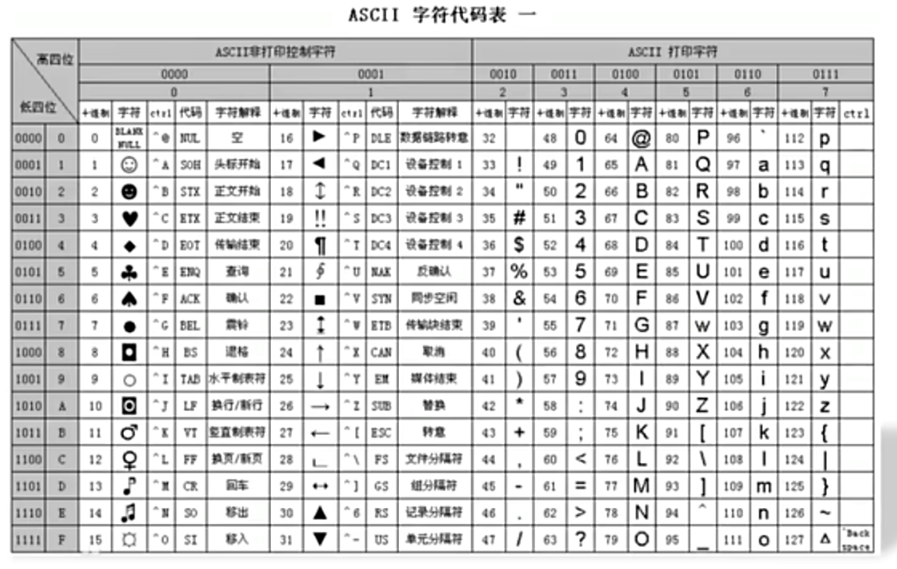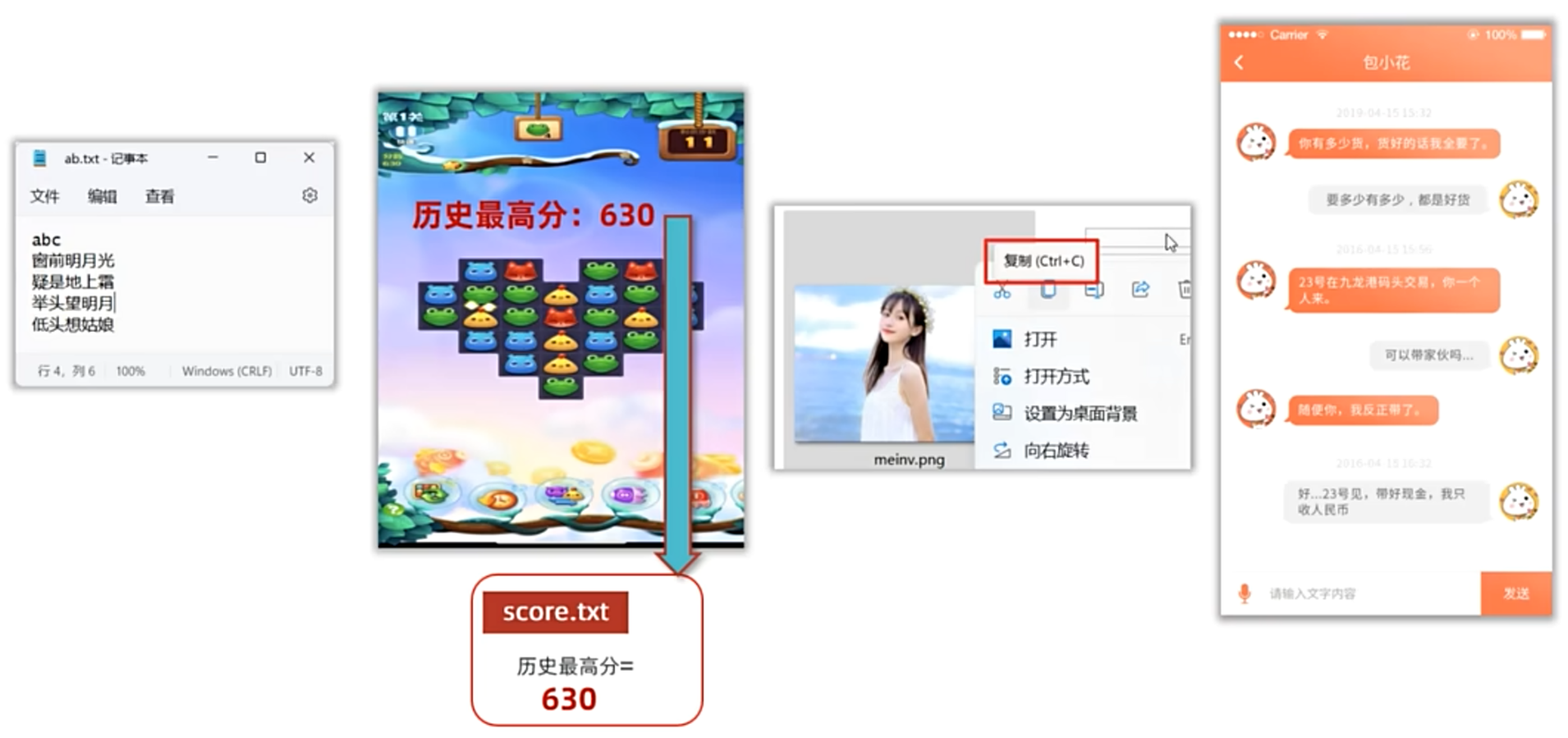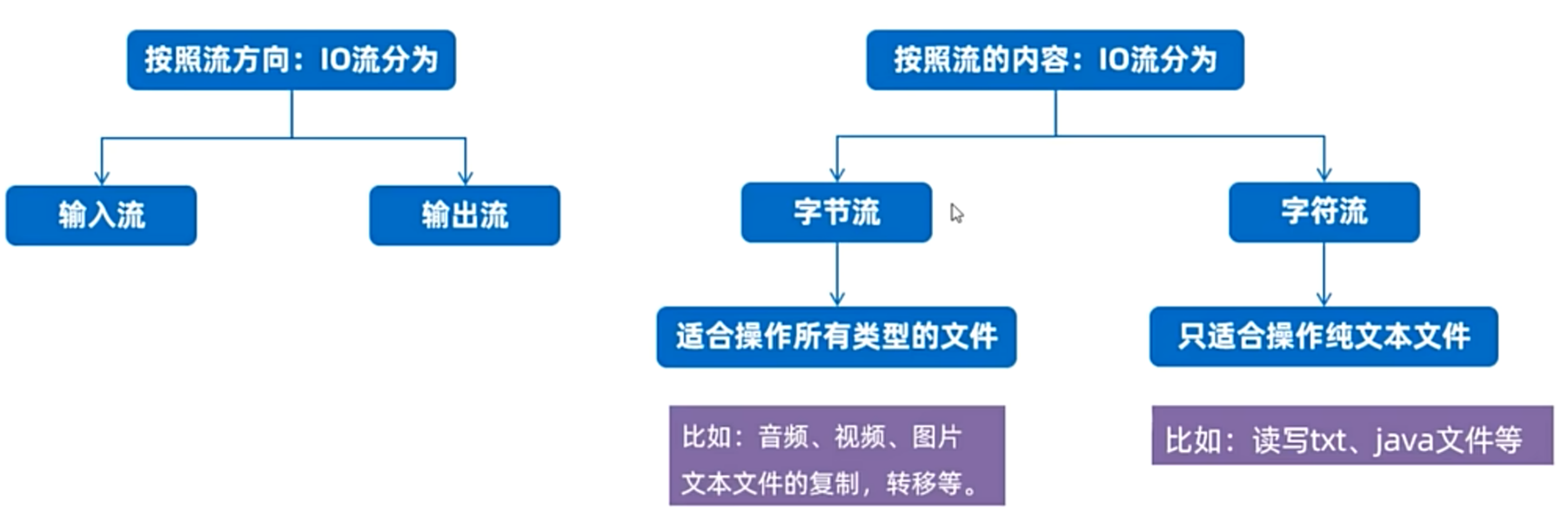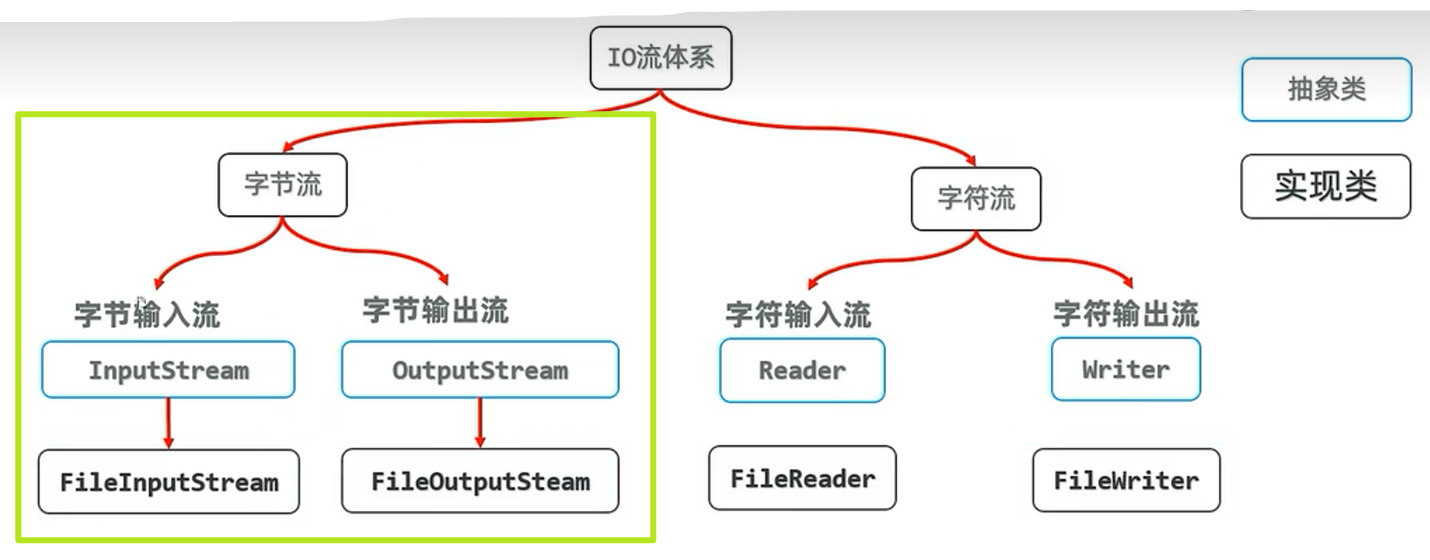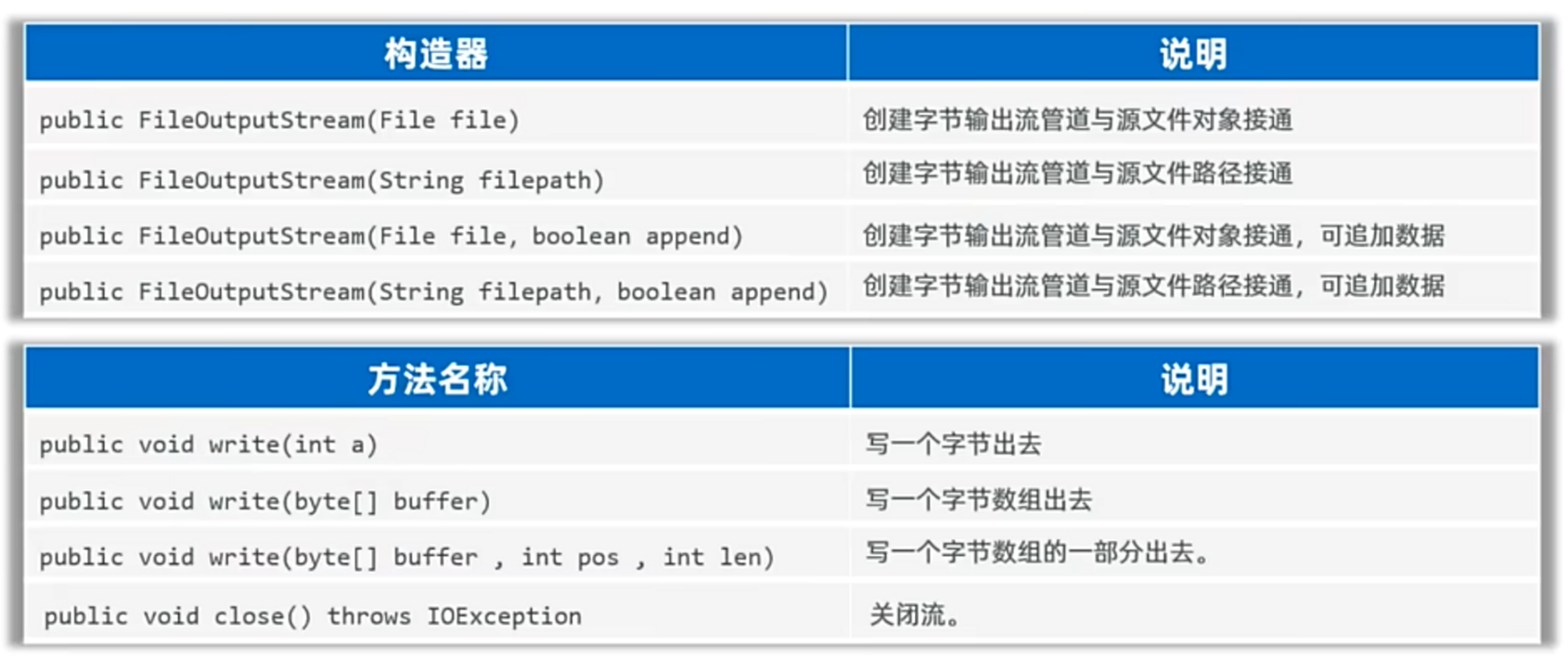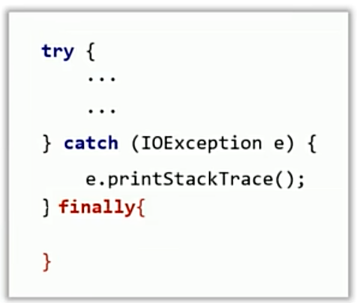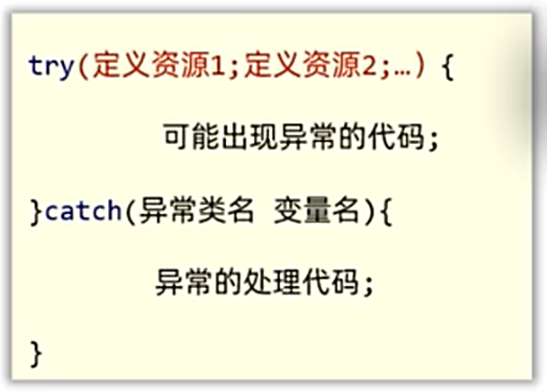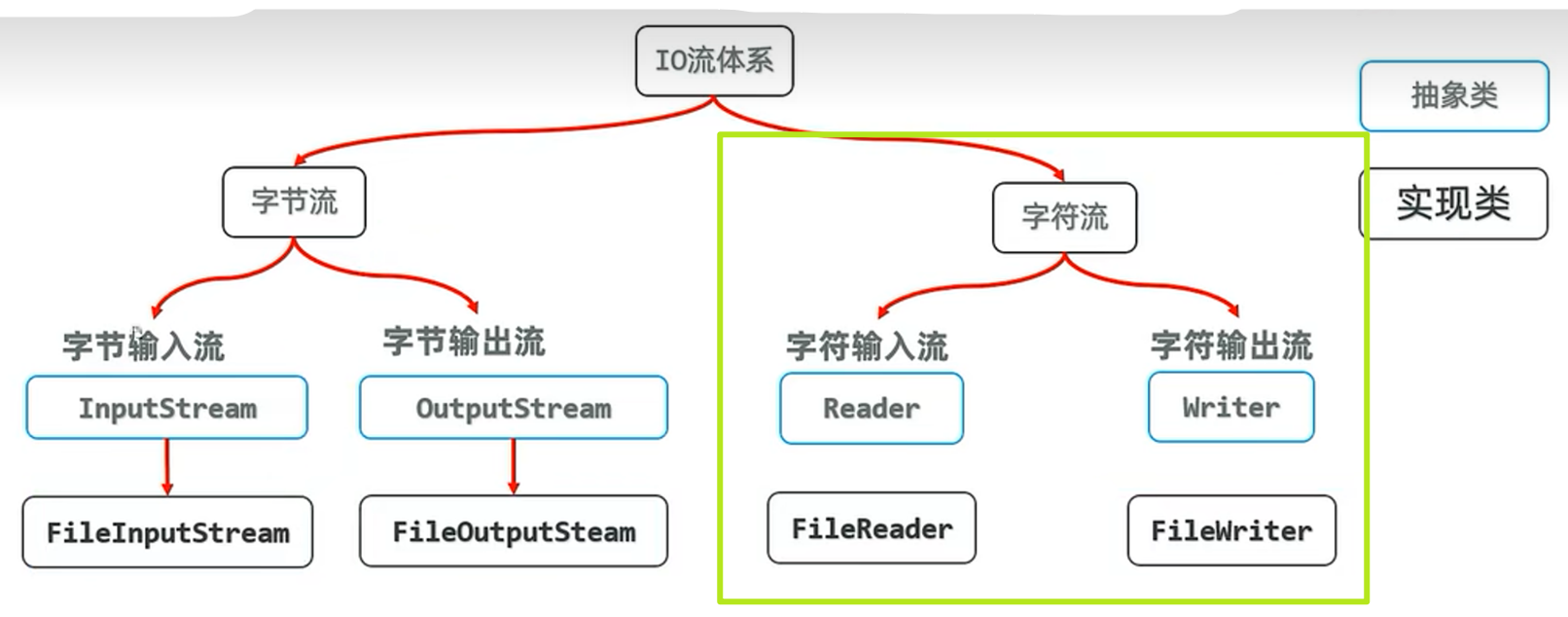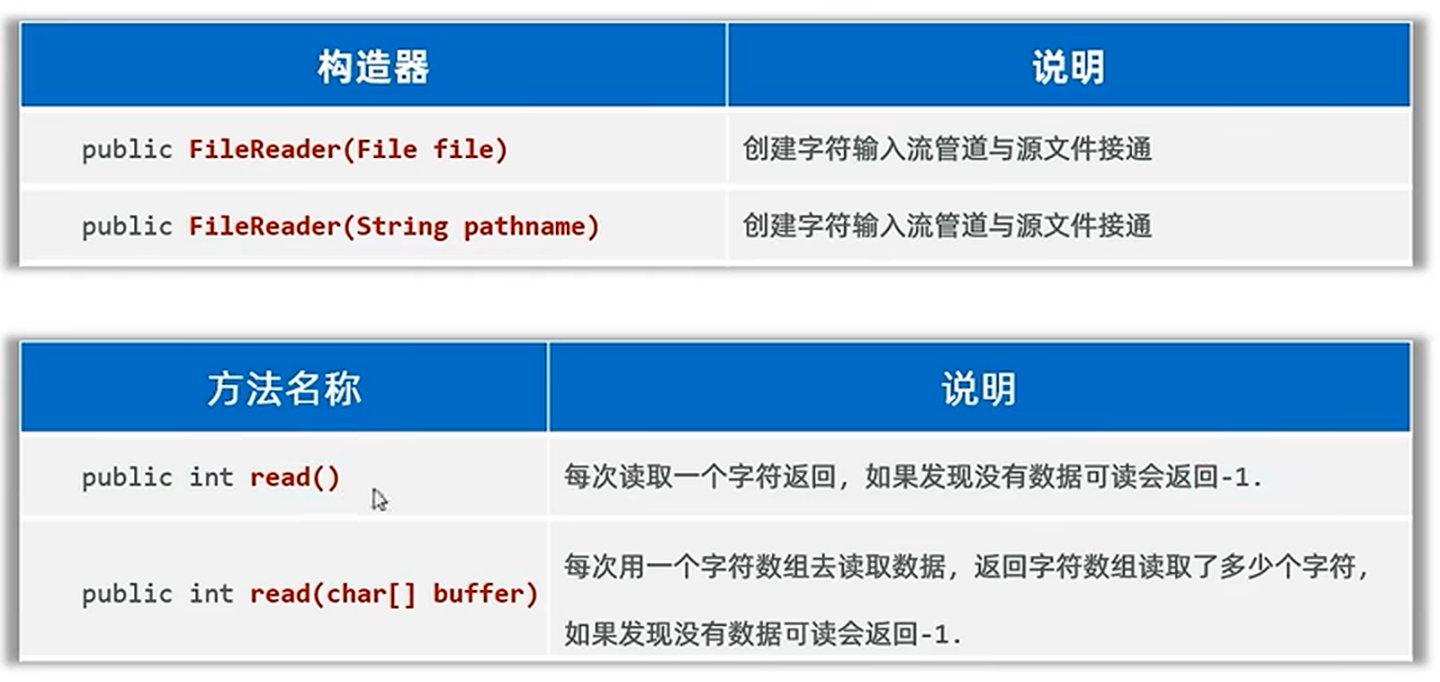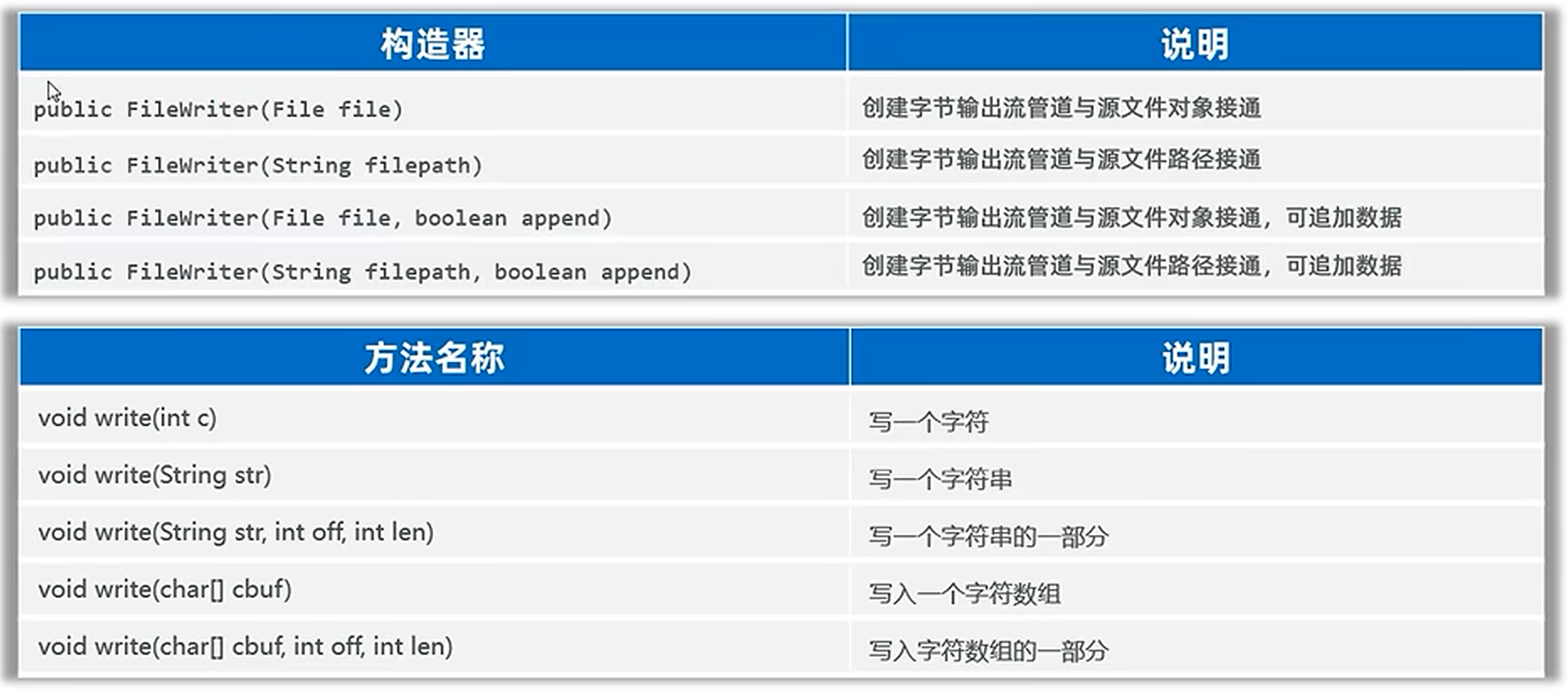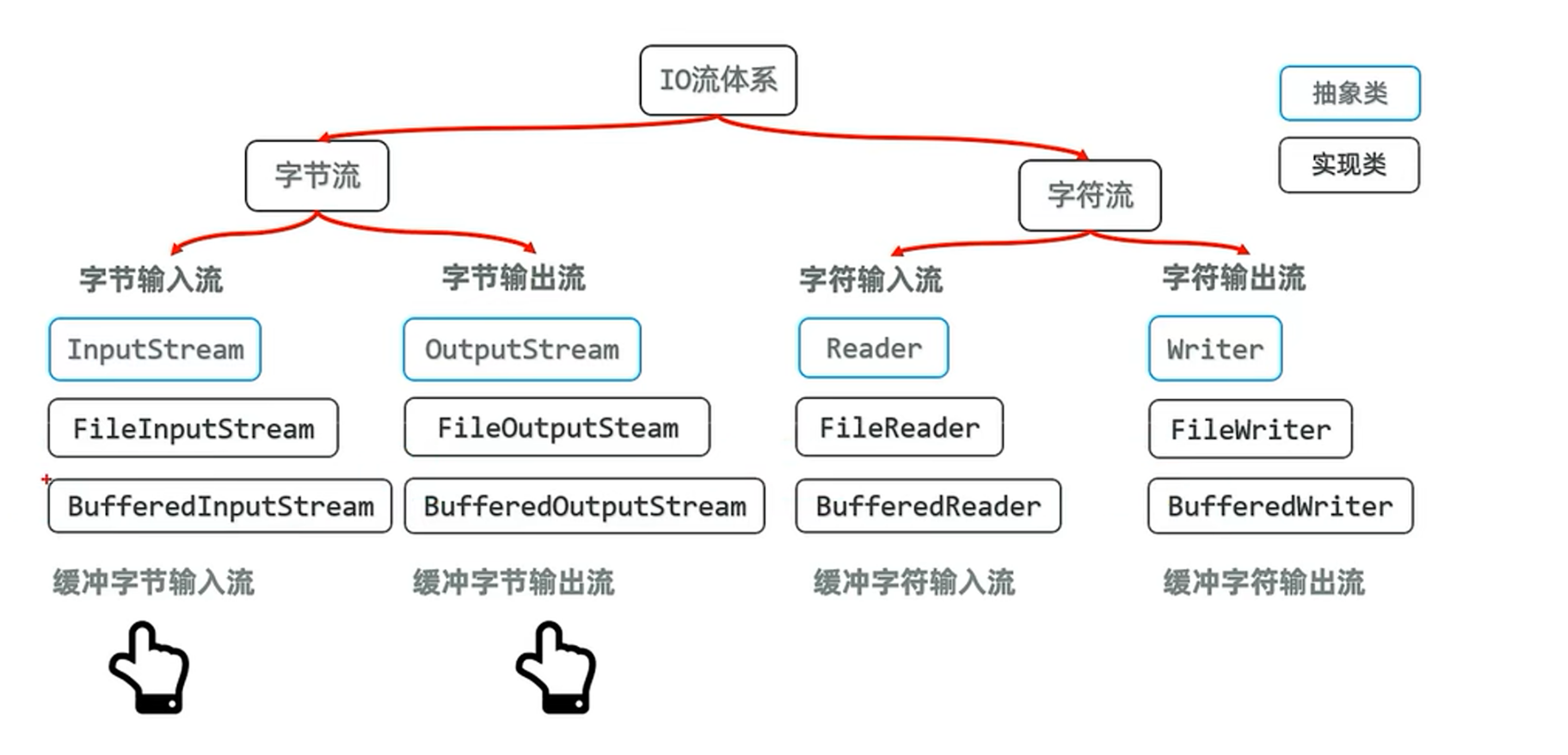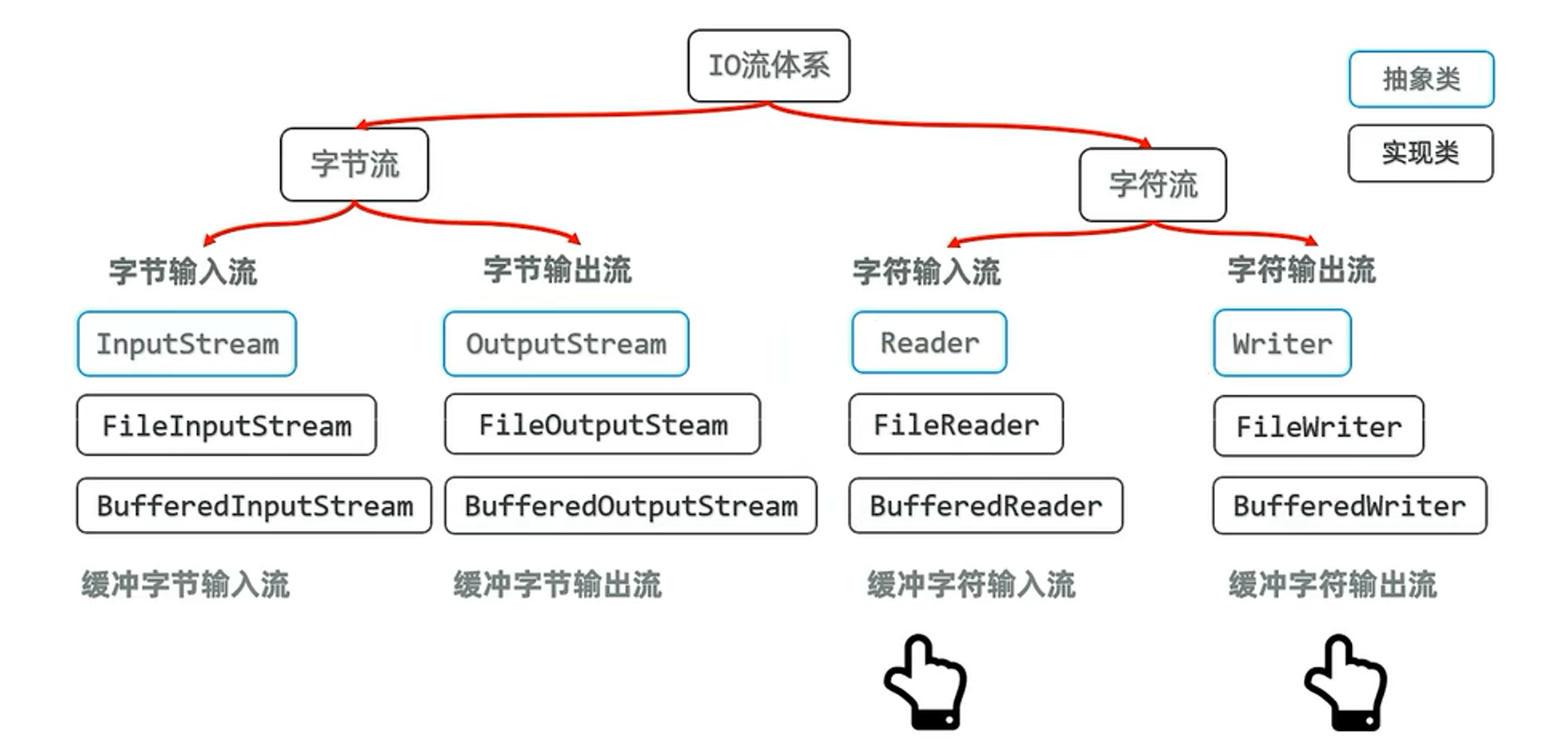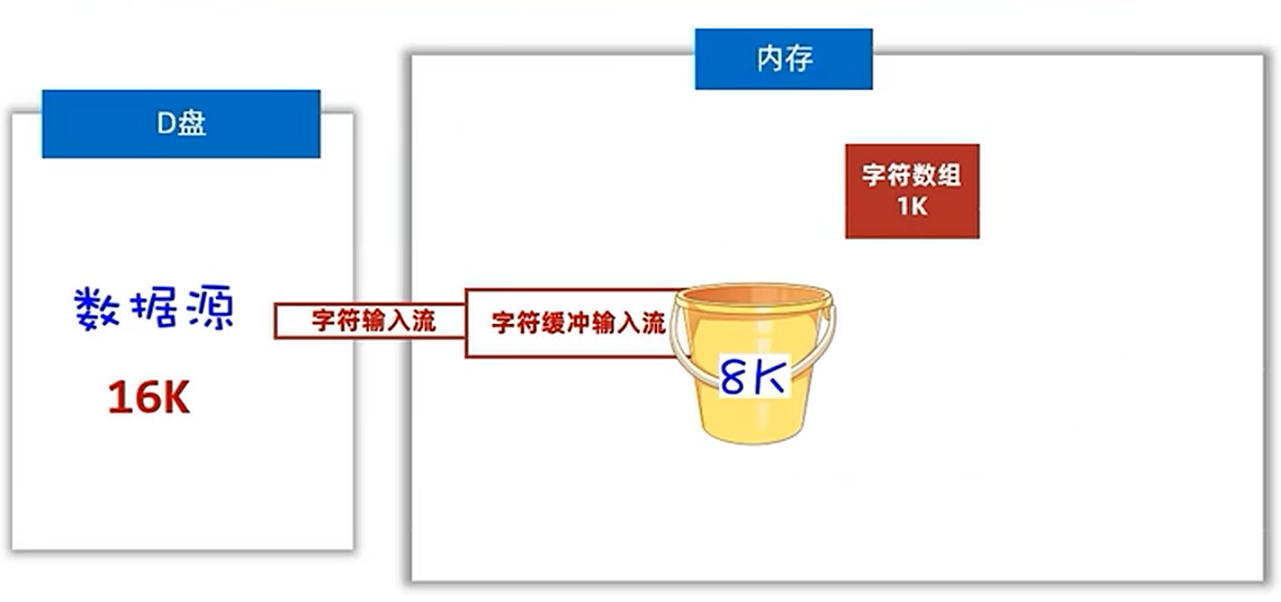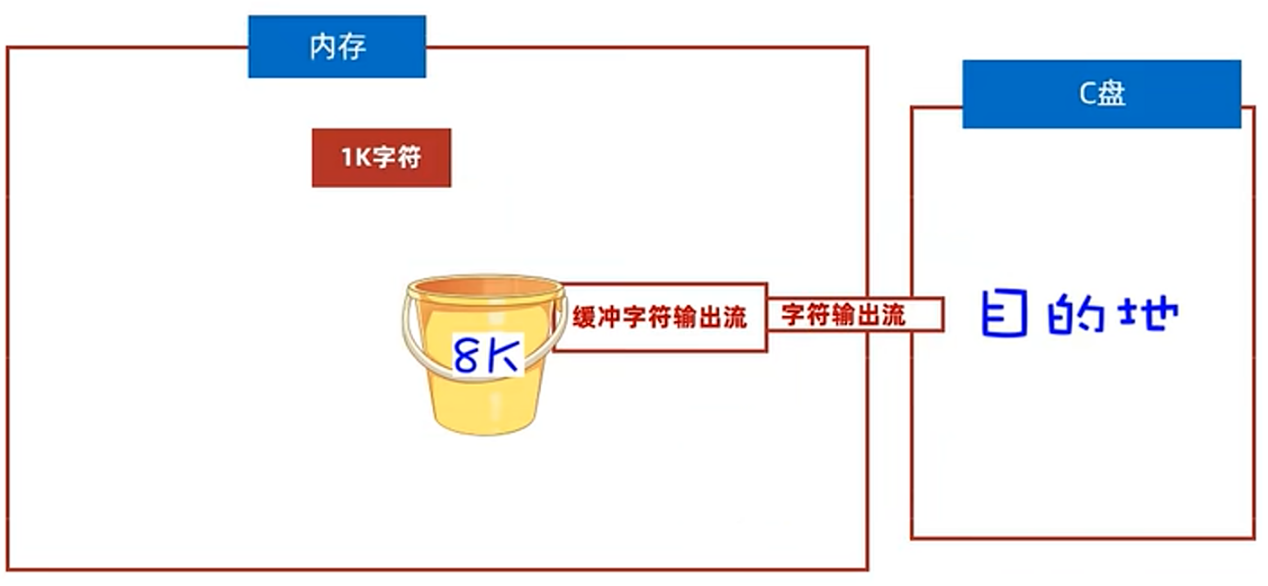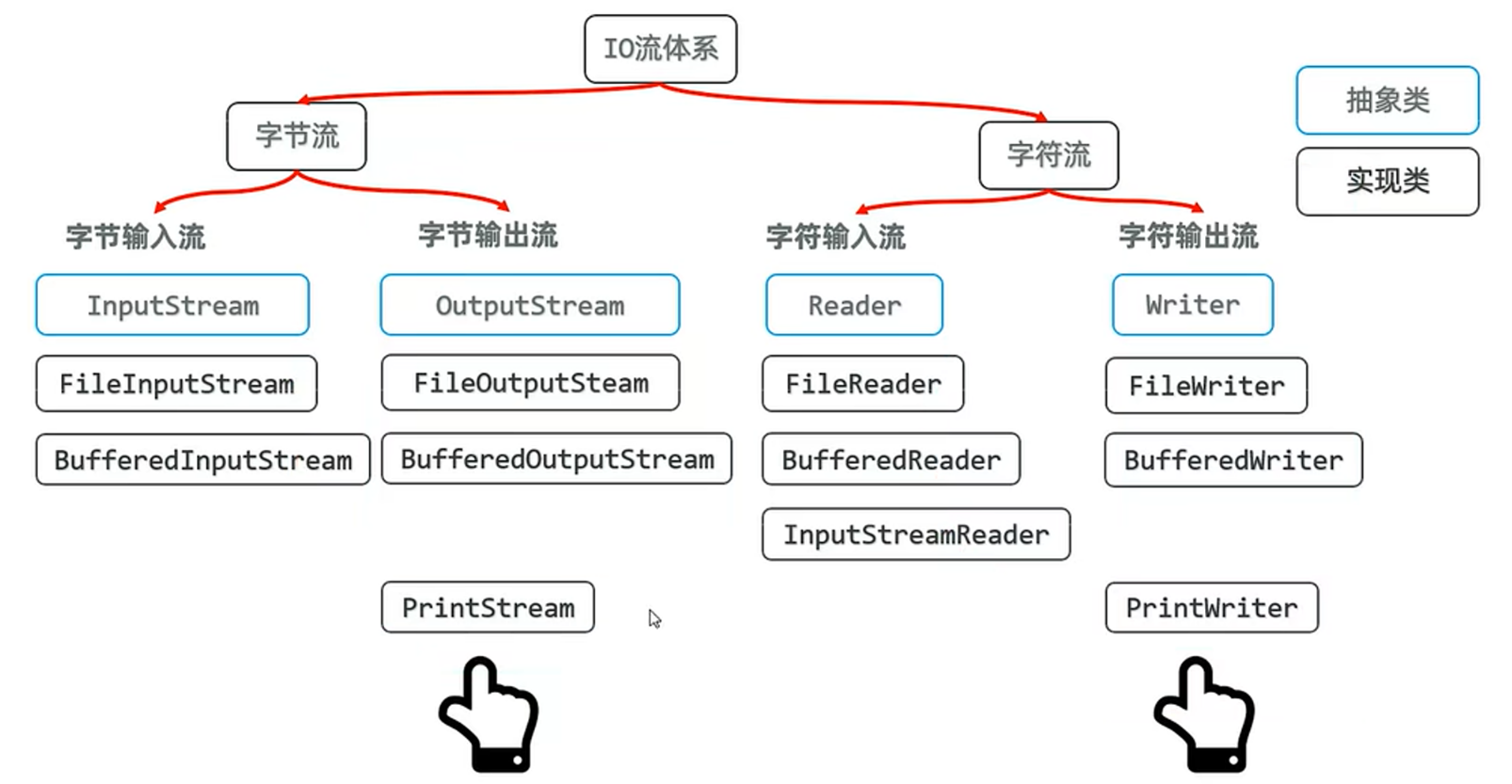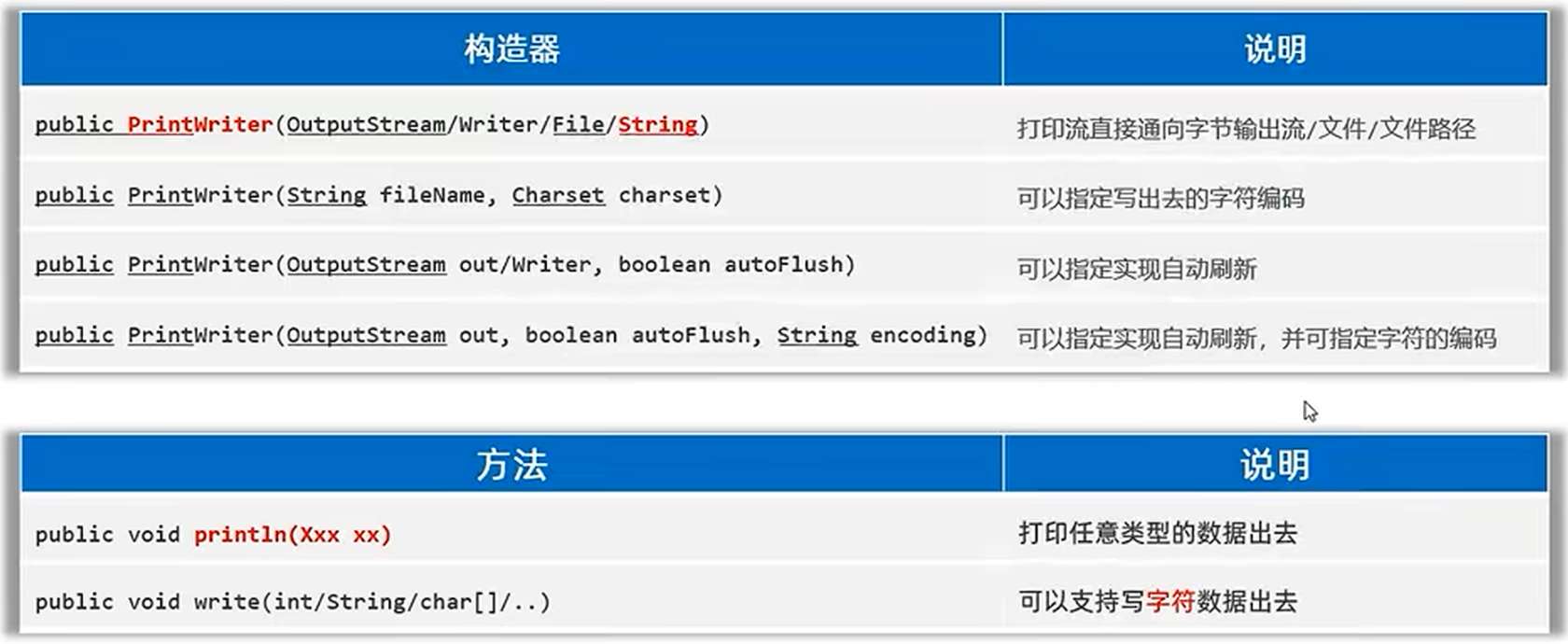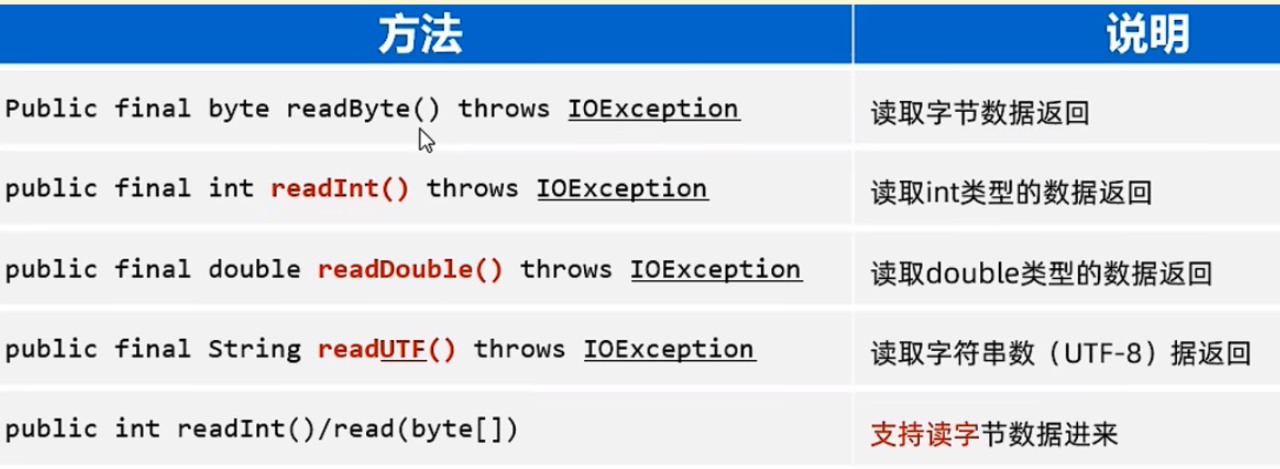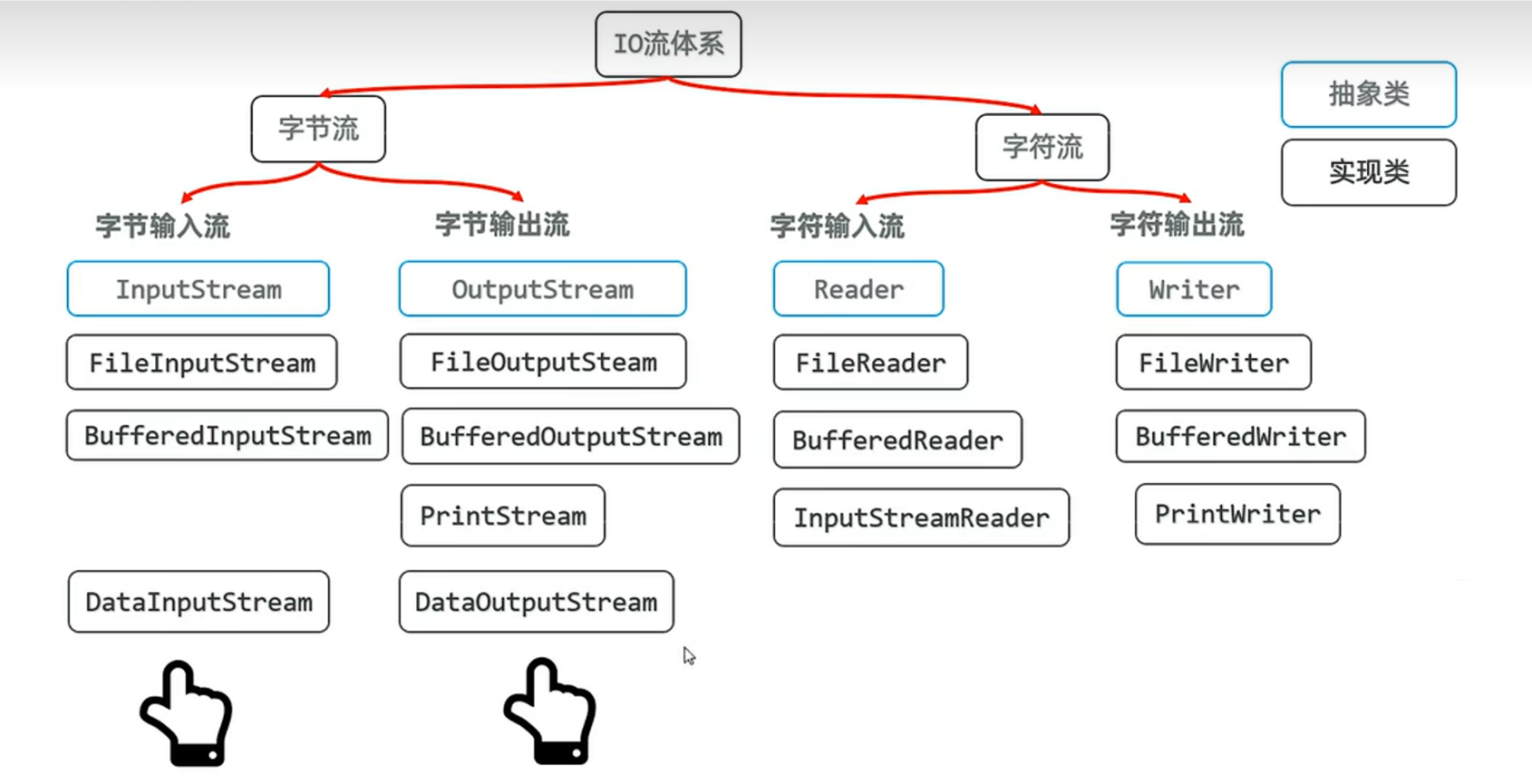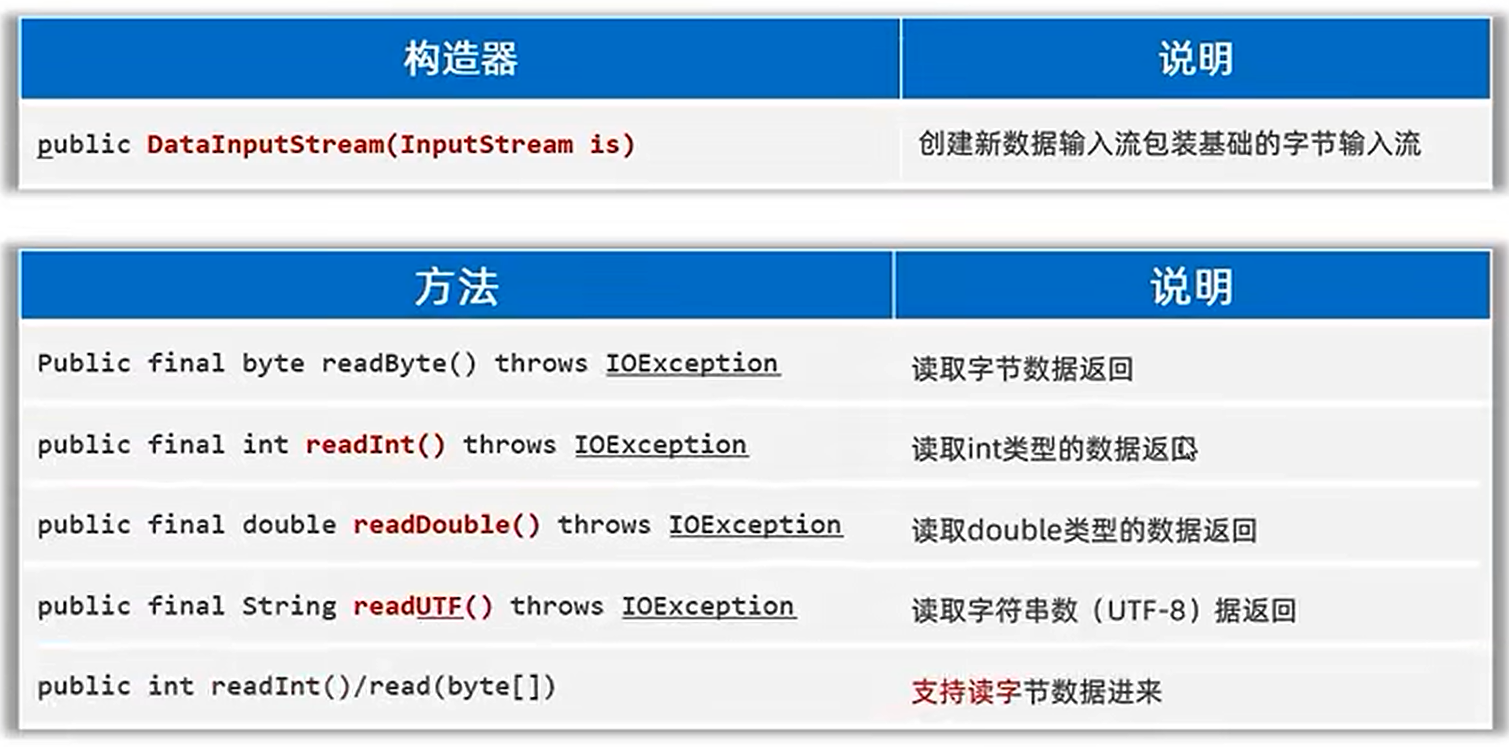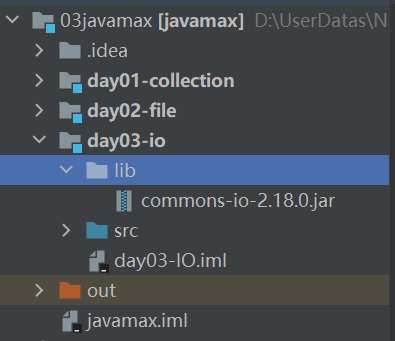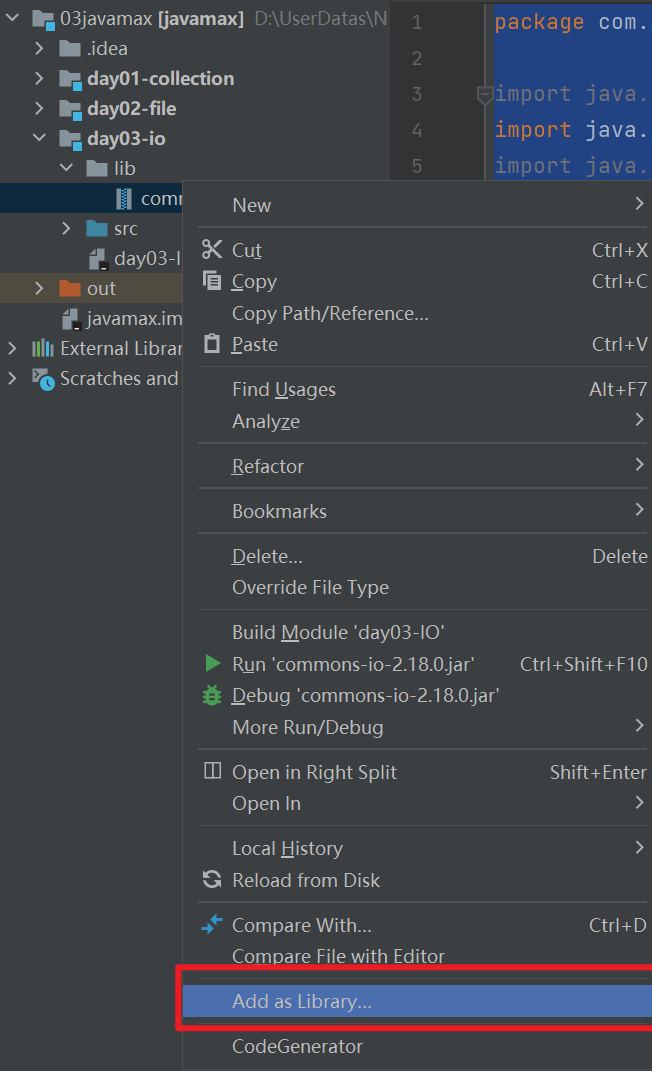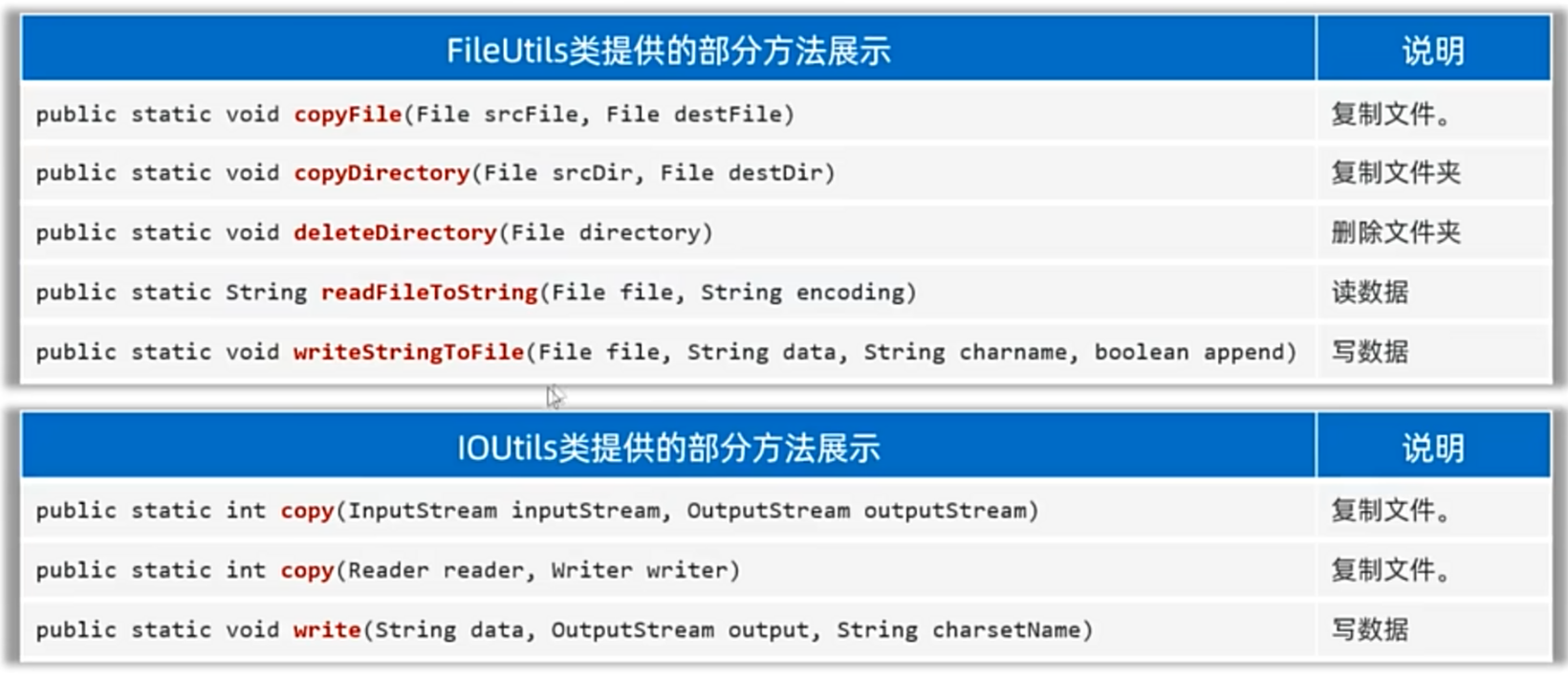字符集
常见字符集
ASCII: 阿斯特码表全称美国信息交换标准代码, 包含英文,数字,符号等
- 标准ASCII使用1个字节存储一个字符
- 首位是0,因此,总共可表示128个字符,对美国佬来说完全够用
GBK: 汉字内码扩展规范
- 汉字编码字符集(国标), 包含2万多个汉字字符
- 使用2个字节存储一个中文字符
- 兼容ASCLL字符集, 汉字第一个字节的第一位必须是1, 所以可以区分英汉
Unicode字符集: 统一码, 万国码
- Unicode是国际组织制定的,可以容纳世界上所有文字、符号的字符集
- UTF-32: 4个字节表示一个字符, 可以容纳各国字符, 但是占用空间大, 效率较低, 大家不爱用
- UTF-8: 可变长编码方案, 分4个长度区: 1个字节, 2个字节,3个字节,4个字节
- 英文字符、数字等只占1个字节(兼容标准ASCII编码),汉字字符占用3个字节
- 技术人员在开发时都应该使用UTF-8编码
- 字符编码时使用的字符集,和解码时使用的字符集必须一致,否则会出现乱码
- 英文,数字一般不会乱码,因为很多字符集都兼容了ASCII编码。
小结
- ASCII字符集 :只有英文、数字、符号等,占1个字节
- GBK字符集:汉字占2个字节,英文、数字占1个字节
- UTF-8字符集:汉字占3个字节,英文、数字占1个字节
编码解码
字符编码
字符解码
示例代码
public class Dome1 {
public static void main(String[] args) throws Exception {
// 使用程序进行对字符编码解码
String str = "abc123中国and世界321cba";
// 1.1UTF-8的编码
// byte[] bytes = str.getBytes(); // 使用平台的默认字符集进行编码(UTF-8)
// System.out.println(bytes.length); // 27
// System.out.println(Arrays.toString(bytes)); // [97, 98, 99, 49, 50, 51, -28, -72, -83, -27, -101, -67, 97, 110, 100, -28, -72, -106, -25, -107, -116, 51, 50, 49, 99, 98, 97]
// 1.2UTF-8的解码
// String str1 = new String(bytes);
// System.out.println(str1); // abc123中国and世界321cba
// 2.1GBK的编码
byte[] bytes = str.getBytes("GBK"); // 指定字符集进行编码
System.out.println(bytes.length); // 23
System.out.println(Arrays.toString(bytes)); // [97, 98, 99, 49, 50, 51, -42, -48, -71, -6, 97, 110, 100, -54, -64, -67, -25, 51, 50, 49, 99, 98, 97]
// 2.2GBK的解码
String str2 = new String(bytes, "GBK");
System.out.println(str2); // abc123中国and世界321cba
}
}
IO流
认识IO流
IO流用于读写数据 (读写文件, 或者网络中的数据)
- I指Inpot, 称为输入流, 负责把数据读取到内存中
- O指Oitput, 称为输出流, 负责写数据到硬盘或网络
应用场景
IO流的分类
- 字节输入流 InputStream (读字节数据的)
- 字节输出流 OutputStream (写字节数据出去的)
- 字符输入流 Reader(读字符数据的)
- 字符输出流 Writer(写字符数据出去的)
字节流
字节流: 适合操作所有类型的文件, 特别适合数据的迁移, 如文件复制, 不适合读取文本
1. 字节输入流 FileInputStream
以内存为基准, 把磁盘文件中的数据以字节的形式读取到内存中
示例1: 每次读取一个字节
public class Dome2 {
public static void main(String[] args) throws Exception {
// 认识字节输入流, 把文件中的字节数据读取到内存中
// 1.创建字节输入流对象
// FileInputStream fis = new FileInputStream(new File("\\day03-io\\src\\com\\ithiema\\doem\\1.text")); // 完整写法
FileInputStream fis = new FileInputStream("day03-io\\src\\com\\ithiema\\doem\\1.text"); // 简写
// 2.读取文件中的字节数据
// 每次读取一个字节
int b;
while ((b = fis.read()) != -1) {
// 每次读取一个字节, 性能较差, 读取汉字输出一定会乱码!
System.out.print((char) b); // abcd123
}
fis.close(); // 关闭管道,释放资源
}
}
- 使用read()方法每次读取一个字节, 读取性能差(频繁调用系统), 并且读取汉字会乱码
示例2: 每次读取多个字节
public class Dome2 {
public static void main(String[] args) throws Exception {
// 认识字节输入流, 把文件中的字节数据读取到内存中
// 1.创建字节输入流对象
// FileInputStream fis = new FileInputStream(new File("\\day03-io\\src\\com\\ithiema\\doem\\1.text")); // 完整写法
FileInputStream fis = new FileInputStream("day03-io\\src\\com\\ithiema\\doem\\1.text"); // 简写
// 3.每次读取多个字节
// 性能得到提升: 因为每次读取多个字节,可以减少硬盘和内存的交互次数,从而提升性能。
byte[] buffer = new byte[3];
int len;
while ((len = fis.read(buffer)) != -1) {
// 把读取到的字节数组转成字符串输出, 读取多少倒出多少
// 无法避免读取汉字输出乱码的问题: 存在截断汉字字节的可能性!
String str = new String(buffer, 0, len);
System.out.print(str); // abcd123
}
fis.close(); // 关闭管道,释放资源
}
}
- 读取性能会有明显提升, 但是不能避免汉字乱码问题
示例3: 一次读取全部字节
Java官方为InputStream提供了如下方法,可以直接把文件的全部字节读取到一个字节数组中返回
public class Dome2 {
public static void main(String[] args) throws Exception {
// 认识字节输入流, 把文件中的字节数据读取到内存中
// 1.创建字节输入流对象
// FileInputStream fis = new FileInputStream(new File("\\day03-io\\src\\com\\ithiema\\doem\\1.text")); // 完整写法
FileInputStream fis = new FileInputStream("day03-io\\src\\com\\ithiema\\doem\\1.text"); // 简写
// 4.一次读取文件全部字节
// 避免截断汉字字节的可能性, 输出汉字不会乱码!
byte[] bytes = fis.readAllBytes();
String rs = new String(bytes);
System.out.println(rs); // abcd中国123
fis.close(); // 关闭管道,释放资源
}
}
- 定义与文件一样大小的字节数组, 一次性读取文件的全部字节, 避免汉字乱码
- 如果文件很大, 可能会引起内存溢出的问题
2. 字节输出流 FileOutputStream
以内存为基础, 把内存中的数据以字节的形式写到文件中
public class Dome3 {
public static void main(String[] args) throws Exception {
// 使用字节输出流将字节数据写入到文件中
// 1.创建字节输出流对象
// FileOutputStream os = new FileOutputStream("day03-io\\src\\com\\ithiema\\doem\\2.text"); // 覆盖管道
FileOutputStream os = new FileOutputStream("day03-io\\src\\com\\ithiema\\doem\\2.text", true); // 追加管道
// 2.写入数据
os.write('a'); //写入字符数据
os.write(97); //写入字节数据
os.write('国'); //写入字符数据, 汉字会乱码
// 3.写入字节数组
os.write("\r\n".getBytes()); //换行符
byte[] bytes = "我爱你中国666".getBytes();
os.write(bytes);
// 4.写入字节数组的一部分
os.write(bytes, 0, 3); //写入"我", 汉字3个字节
os.close(); // 关闭流
}
}
3. 文件复制
任何文件的底层都是字节,字节流做复制就是一字不漏的转移完全部字节,只要复制后、的文件格式一致就没问题! 字节流非常适合做文件的复制操作!
public class Dome4 {
public static void main(String[] args) {
// 完成文件的复制
// 复制文件的时候必须带文件名, 无法自动生成文件名
try {
copyFile("day03-io\\src\\com\\ithiema\\doem\\2.text", "day03-io\\src\\com\\ithiema\\doem\\3.text");
} catch (Exception e) {
e.printStackTrace();
}
}
/**
* 复制文件
*
* @param srcPath 源文件路径
* @param destPath 目录路径
*/
private static void copyFile(String srcPath, String destPath) throws Exception {
//1.创建输入流和输出流对象
FileInputStream fis = new FileInputStream(srcPath);
FileOutputStream fos = new FileOutputStream(destPath);
//2.读取文件内容
byte[] buffer = new byte[1024];
int len;
while ((len = fis.read(buffer)) != -1) {
fos.write(buffer, 0, len); // 读到多少数据, 就写多少数据, 防止残留数据污染文件
}
System.out.println("复制成功");
fos.close();
fis.close();
}
}
4. 释放资源
try-catch-finally
public class Dome5 {
public static void main(String[] args) {
// 资源释放方案
copyFile("day03-io\\src\\com\\ithiema\\doem\\2.text", "day03-io\\src\\com\\ithiema\\doem\\3.text");
}
/**
* 复制文件
*
* @param srcPath 源文件路径
* @param destPath 目录路径
*/
private static void copyFile(String srcPath, String destPath) {
FileInputStream fis = null;
FileOutputStream fos = null;
try {
// 可能的异常
int num = 0 / 10;
//1.创建输入流和输出流对象
fis = new FileInputStream(srcPath);
fos = new FileOutputStream(destPath);
// 可能的异常
int num2 = 0 / 10;
//2.读取文件内容
byte[] buffer = new byte[1024];
int len;
while ((len = fis.read(buffer)) != -1) {
fos.write(buffer, 0, len); // 读到多少数据, 就写多少数据, 防止残留数据污染文件
}
System.out.println("复制成功");
} catch (IOException e) {
e.printStackTrace();
} finally {
// 统一释放资源,而且代码出现异常,也能释放资源
try {
if(fis != null) fis.close();
} catch (IOException e) {
e.printStackTrace();
}
try {
if(fos != null) fos.close();
} catch (IOException e) {
e.printStackTrace();
}
}
}
}
- finally代码区: 无论try中的程序是正常还是异常,最后都一定会执行finally区,除非IVM终止。
- 作用: 一般用于在程序执行完成后进行资源的释放操作(专业级做法)
try-with-resource
public class Dome6 {
public static void main(String[] args) {
// 资源释放方案
copyFile("day03-io\\src\\com\\ithiema\\doem\\2.text", "day03-io\\src\\com\\ithiema\\doem\\3.text");
}
/**
* 复制文件
*
* @param srcPath 源文件路径
* @param destPath 目录路径
*/
private static void copyFile(String srcPath, String destPath) {
try (
//1.创建输入流和输出流对象
//这里只能放置资源对象, 用完后,最终会自动关闭资源
FileInputStream fis = new FileInputStream(srcPath);
FileOutputStream fos = new FileOutputStream(destPath);
) {
// 可能的异常
int num = 0 / 10;
//2.读取文件内容
byte[] buffer = new byte[1024];
int len;
while ((len = fis.read(buffer)) != -1) {
fos.write(buffer, 0, len); // 读到多少数据, 就写多少数据, 防止残留数据污染文件
}
System.out.println("复制成功");
} catch (Exception e) {
e.printStackTrace();
}
}
}
- JDK 7开始提供了更简单的资源释放方案
- 该资源使用完毕后,会自动调用其close()方法,完成对资源的释放!
- try()中只能放置资源,否则报错
- 资源一般指的是最终实现了AutoCloseable接口
字符流
字符流: 适合操作纯文本文件 , 不会乱码
字符输入流 FileReader
以内存为基准, 可以把文件中的数据以字符的形式读取到内存中
public class Dome7 {
public static void main(String[] args) {
// 掌握字符输入流
try (
// 1. 创建字符输入流对象
FileReader fr = new FileReader("day03-io\\src\\com\\ithiema\\doem\\3.text");
) {
// 2.每次读取多个字符
char[] chars = new char[3];
int len;
while ((len = fr.read(chars)) != -1) {
// 3.把读取到的字符数组, 转成字符串输出
// 拓展:文件字符输入流每次读取多个字符,性能较好,
// 而且读取中文是按照字符读取,不会出现乱码! 这是一种读取中文很好的方案。
String str = new String(chars, 0, len);
System.out.print(str);
}
System.out.println("读取完毕");
} catch (Exception e) {
e.printStackTrace();
}
}
}
字符输出流 FileWriter
以内存为基准, 把内存中的数据以字符的形式写到文件中
public class Dome8 {
public static void main(String[] args) {
// 掌握字符输出流
try (
// 1. 创建字符输出流对象
// FileWriter fw = new FileWriter("day03-io\\src\\com\\ithiema\\doem\\4.text"); // 覆盖管道
FileWriter fw = new FileWriter("day03-io\\src\\com\\ithiema\\doem\\4.text"); // 组加管道
) {
// 2. 写入1个字符
fw.write("a");
fw.write(98);
fw.write("中");
// 3.写入字符串
fw.write("\r\n");
fw.write("中国爱你");
// 4.写入字符串的一部分
fw.write("java工资高", 0, 3);
// 5.写入字符数组
fw.write("我爱你中国666".toCharArray());
// 6.写入字符数组的一部分
char[] chars = "好好学习".toCharArray();
fw.write(chars, 0, 3);
} catch (IOException e) {
e.printStackTrace();
}
}
}
字符输出流写出数据后, 必须刷新流, 或者关闭流, 写出的数据才能生效
- java为了提高程序的写出效率, 会把写出的字符先保存到暂存区(内存中), 等刷新或者关闭流的时候, 再调用系统能力把字符写到文件中
- 刷新流之后, 流还可以继续使用
- 关闭流之后, 流无法使用了
- 关闭流包含了刷新流, 及时释放资源很重要
缓冲流
字节缓冲流
字节缓冲流继承字节流
缓冲流可以提高字节流读取和写入数据的性能
- 缓冲字节输入流自带了8KB缓冲池
- 缓冲字节输出流也自带了8KB缓冲池
创建缓冲流, 然后包装字节流, 字节的读写性能得到提升
public class Dome9 {
public static void main(String[] args) {
// 使用字节缓存流复制文
// 使用上没有变化, 性能提升了
copyFile("day03-io\\src\\com\\ithiema\\doem\\2.text", "day03-io\\src\\com\\ithiema\\doem\\5.text");
}
/**
* 复制文件
*
* @param srcPath 源文件路径
* @param destPath 目录路径
*/
private static void copyFile(String srcPath, String destPath) {
try (
//1.创建输入流和输出流对象
FileInputStream fis = new FileInputStream(srcPath);
FileOutputStream fos = new FileOutputStream(destPath);
//2.把低级的字节流包装为高级的缓存字节流
BufferedInputStream bis = new BufferedInputStream(fis);
BufferedOutputStream bos = new BufferedOutputStream(fos);
) {
//2.读取文件内容
byte[] buffer = new byte[1024];
int len;
while ((len = bis.read(buffer)) != -1) {
bos.write(buffer, 0, len); // 读到多少数据, 就写多少数据, 防止残留数据污染文件
}
System.out.println("复制成功");
} catch (IOException e) {
e.printStackTrace();
}
}
}
字符缓冲流
字符缓冲流继承字符流
缓冲流可以提高字节符流读取和写入数据的性能
- 缓冲字符输入流自带了8KB缓冲池
- 缓冲字符输出流也自带了8KB缓冲池
创建缓冲字符输入流, 缓冲字符输入流提供了按行读取字符的方法
public class Dome10 {
public static void main(String[] args) {
// 使用缓冲字符流读取数据
try (
// 1. 创建字符输入流对象
FileReader fr = new FileReader("day03-io\\src\\com\\ithiema\\doem\\4.text");
// 2. 创建缓冲字符输入流对象
BufferedReader br = new BufferedReader(fr);
) {
// 3.按行读取数据
String len;
while ((len = br.readLine()) != null) {
// 4. 输出读取的数据
// 这是目前读取文本最优雅的方案, 性能好, 不乱码, 按行读取不会破坏数据的顺序
System.out.print(len);
}
System.out.println("读取完毕");
} catch (Exception e) {
e.printStackTrace();
}
}
}
创建缓冲字符输出流, 缓冲字符输出流提供了换行方法
public class Dome11 {
public static void main(String[] args) {
// 使用缓冲字符流写出数据
// 掌握字符输出流
try (
// 1. 创建字符输出流对象
FileWriter fw = new FileWriter("day03-io\\src\\com\\ithiema\\doem\\6.text");
// 2. 创建缓冲字符输出流对象
BufferedWriter bw = new BufferedWriter(fw);
) {
// 3. 写出1个字符
bw.write("a");
bw.write(98);
bw.write("中");
// 4.写出字符串
bw.newLine(); // 换行
bw.write("中国爱你");
// 5.写出字符串的一部分
bw.write("java工资高", 0, 3);
// 6.写出字符数组
bw.write("我爱你中国666".toCharArray());
// 7.写出字符数组的一部分
char[] chars = "好好学习".toCharArray();
bw.write(chars, 0, 3);
} catch (IOException e) {
e.printStackTrace();
}
}
}
性能分析
分别使用原始的字节流,以及字节缓冲流复制一个很大的视频, 测试性能
public class Dome13 {
public static final String SRC_FILE = "day03-io\\src\\com\\ithiema\\doem\\8.text";
public static final String DEST_FILE = "day03-io\\src\\com\\ithiema\\doem\\";
public static void main(String[] args) {
// 分析普通字节流和缓冲字节流的性能
// 1.使用低级的字节流按照一个一个字节的形式复制文件,
copyFile1(); // 非常慢, 无法忍受, 10min
// 2.使用低级的字节流按照字节数组的形式复制文件,
copyFile2(); // 比较慢, 还能接受, 6.399s
// 3.使用高级的缓冲字节流按照一个一个字节的形式复制文件,
copyFile3(); // 比较慢, 无法接受, 21.819s
// 4.使用高级的缓冲字节流按照字节数组的形式复制文件
copyFile4(); // 非常块, 1.182s
}
private static void copyFile4() {
long start = System.currentTimeMillis();
try (
FileInputStream fis = new FileInputStream(SRC_FILE);
BufferedInputStream bis = new BufferedInputStream(fis);
FileOutputStream fos = new FileOutputStream(DEST_FILE + "11.text");
BufferedOutputStream bos = new BufferedOutputStream(fos);
) {
byte[] bytes = new byte[1024];
int len;
while ((len = bis.read(bytes)) != -1) {
bos.write(bytes,0, len);
}
} catch (IOException e) {
e.printStackTrace();
}
long end = System.currentTimeMillis();
System.out.println("缓冲字节流批量复制文件耗时:" + (end - start) / 1000.0 + "s");
}
private static void copyFile3() {
long start = System.currentTimeMillis();
try (
FileInputStream fis = new FileInputStream(SRC_FILE);
BufferedInputStream bis = new BufferedInputStream(fis);
FileOutputStream fos = new FileOutputStream(DEST_FILE + "10.text");
BufferedOutputStream bos = new BufferedOutputStream(fos);
) {
int b;
while ((b = bis.read()) != -1) {
bos.write(b);
}
} catch (IOException e) {
e.printStackTrace();
}
long end = System.currentTimeMillis();
System.out.println("缓冲字节流单个字节复制文件耗时:" + (end - start) / 1000.0 + "s");
}
private static void copyFile2() {
long start = System.currentTimeMillis();
try (
FileInputStream fis = new FileInputStream(SRC_FILE);
FileOutputStream fos = new FileOutputStream(DEST_FILE + "9.text");
) {
byte[] bytes = new byte[1024];
int len;
while ((len = fis.read(bytes)) != -1) {
fos.write(bytes, 0, len);
}
} catch (IOException e) {
e.printStackTrace();
}
long end = System.currentTimeMillis();
System.out.println("普通字节流批量复制文件耗时:" + (end - start) / 1000.0 + "s");
}
private static void copyFile1() {
long start = System.currentTimeMillis();
try (
FileInputStream fis = new FileInputStream(SRC_FILE);
FileOutputStream fos = new FileOutputStream(DEST_FILE + "8.text");
) {
int b;
while ((b = fis.read()) != -1) {
fos.write(b);
}
} catch (IOException e) {
e.printStackTrace();
}
long end = System.currentTimeMillis();
System.out.println("普通字节流单个字节复制文件耗时:" + (end - start) / 1000.0 + "s");
}
}
- 建议使用字节缓冲输入流、字节缓冲输出流,结合字节数组的方式目前来看是性能最优的组合。
- 特殊情况下,可以通过调整原始流的字节数组, 也能让原始流获得很好的性能
- 原始流的字节数组, 越大性能越好, 但是大到一定程度,提升就很小了, 需用通过调试, 找到字节数组的最佳值
其他流
字符输入转换流
继承自字符输入流
InputStreamReader可以解决文件编码不同时,字符流读取文本内容乱码的问题。
- 解决思路: 先获取文件的原始字节流,再将其按真实的字符集编码转成字符输入流,这样字符输入流中的字符就不乱码了。
示例代码
public class Dome14 {
public static void main(String[] args) {
// 使用字符输入转换流, 读取其他编码格式的文件
// 不同编码读取文件会乱码:
// 程序: UTF-8 文件: UTF-8 // 正常读取
// 程序: UTF-8 文件: GBK // 读取乱码
try (
// 1. 创建字符输入流(7.text的编码格式是GBK)
FileInputStream fis = new FileInputStream("day03-io\\src\\com\\ithiema\\doem\\7.text");
// 2. 把字符输入流包装成字符转换输入流, 指定目标文件的编码格式
InputStreamReader isr = new InputStreamReader(fis, "gbk");
// 3. 把字符转换输入流包装成字符缓冲输入流
BufferedReader br = new BufferedReader(isr);
) {
// 4. 读取文件内容
String line;
while ((line = br.readLine()) != null) {
System.out.println(line);
}
} catch (Exception e) {
e.printStackTrace();
}
}
}
打印流
打印流分为字节打印流和字符打印流, 继承关系如下
打印流可以实现更方便、更高效的打印数据出去, 能实现打印啥出去就是啥出去
PrintStream提供的打印数据的方案
PrintWriter提供的打印数据的方案
package com.ithiema.doem;
import java.io.FileOutputStream;
import java.io.PrintStream;
import java.io.PrintWriter;
public class Dome15 {
public static void main(String[] args) {
// 了解打印流
try (
PrintStream ps = new PrintStream("day03-io\\src\\com\\ithiema\\doem\\7.text"); // 字节打印流
PrintWriter pw = new PrintWriter("day03-io\\src\\com\\ithiema\\doem\\7.text"); // 字符打印流, 一样用
PrintStream ps2 = new PrintStream(new FileOutputStream("\"day03-io\\\\src\\\\com\\\\ithiema\\\\doem\\\\7.text\""), true); // 字节打印流,追加管道
) {
// 打印数据, 所见即所得
ps.print(97);
ps.print("a");
ps.println("hello world");
ps.println(true);
ps.println(3.14);
} catch (Exception e) {
e.printStackTrace();
}
}
}
- 使用输出流写出97, 文件中得到的是a, 因为数字会被转成字符, 打印流可以所见即所得
- 打印流一般是指: PrintStream,PrintWriter两个类
- 打印功能2者是一样的使用方式
- PrintStream继承自字节输出流OutputStream,支持写字节
- PrintWrite继承自字符输出流Writer,支持写字符
数据流
作用: 把数据和数据的类型一起进行读写操作
数据输入流
创建数据输入流
输入的方法
数据输出流
创建数据输出流
输出的方法
序列化流
作用: 把Java对象进行序列化/反序列化, 然后读写
对象字节输出流
创建对象
提供方法
注意: 对象如果需要序列化, 必须实现序列化接口 implements Serializable
对象字节输入流
创建对象
读取方法
补充: 如果对象的某些成员不希望参与列序列化, 可以使用transient关键字修饰, 表示不参与序列化
补充: 如果需要序列化多个对象, 可以用法ArrayList集合存放对象, 然后操作集合即可,
ArrayList集合已经实现了序列化接口
包装流
输入输出流
字符缓冲输入流
作用: 自带8kb的缓冲池, 提高读取性能
字符缓冲输出流
特殊数据流
继承关系
DataOutputStream(数据输出流), 允许把数据和其类型一并写出去。
public class Dome17 {
public static void main(String[] args) {
// 了解特殊数据输出流
try (
DataOutputStream dos = new DataOutputStream(new FileOutputStream("day03-io\\src\\com\\ithiema\\doem\\7.text"));
) {
dos.writeByte(34);
dos.writeUTF("hello");
dos.writeInt(100);
dos.writeDouble(3.14);
} catch (Exception e) {
e.printStackTrace();
}
}
}
- 写出的数据是这种格式, 并不是乱码, 因为包含了数据类型, 所以看起来不直观
DatalnputStream(数据输入流), 用于读取数据输出流写出去的数据。
public class Dome16 {
public static void main(String[] args) {
// 了解特殊数据输入流
try (
DataInputStream dis = new DataInputStream(new FileInputStream("day03-io\\src\\com\\ithiema\\doem\\7.text"));
) {
System.out.println(dis.readByte());
System.out.println(dis.readUTF());
System.out.println(dis.readInt());
System.out.println(dis.readDouble());
} catch (Exception e) {
e.printStackTrace();
}
}
}
IO框架
框架(Framework)是一个预先写好的代码库或一组工具,旨在简化和加速开发过程
- 框架的形式: 一般是把类、接口等编译成class形式,再压缩成一个.jar结尾的文件发行出去。
Commons-io: 阿帕奇开源基金组织提供的一套有关IO操作的框架
- 进一步封装了Java的IO流操作,对外提供了更简单的方式来对文件进行操作,对数据进行读写等。
- 下载框架: Commons IO – Download Apache Commons IO
- 在项目中新建lib文件夹, 将commons-io-2.6.jar文件复制进去
- 在jar文件上点右键,选择 Add as Library->点击oK, 把框架集成到项目
使用Commons-io提供的方法, 简化IO流的代码
public class Dome18 {
public static void main(String[] args) throws IOException {
// 使用Commons-io框架
// 1.复制文件
FileUtils.copyFile(new File("day03-io\\src\\com\\ithiema\\doem\\8.text"), new File("day03-io\\src\\com\\ithiema\\doem\\9.text"));
// 2.读取数据
String str = FileUtils.readFileToString(new File("day03-io\\src\\com\\ithiema\\doem\\9.text"), "UTF-8");
System.out.println(str);
}
}
